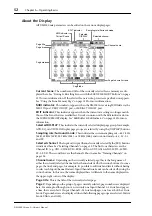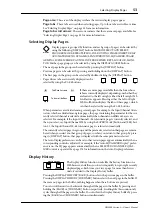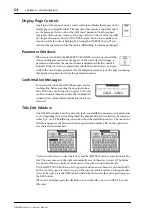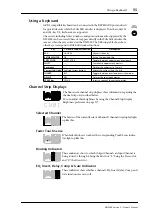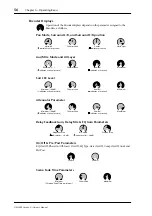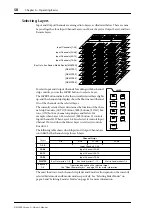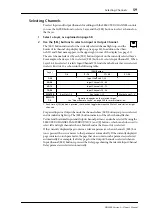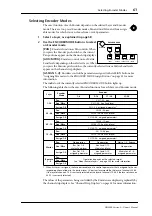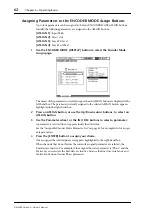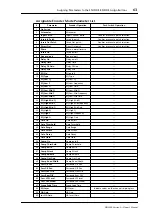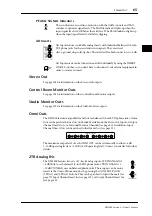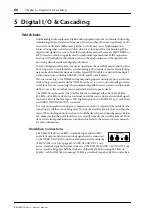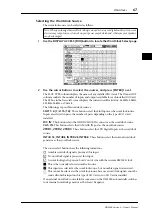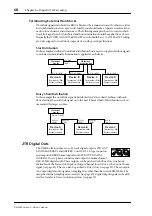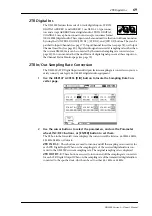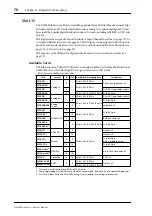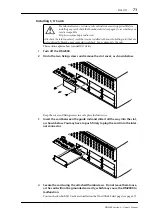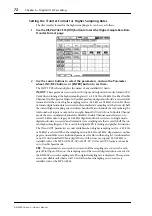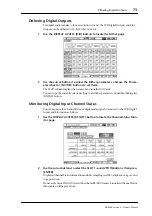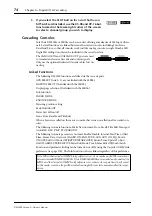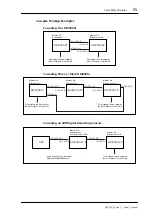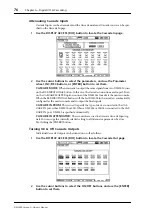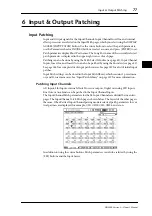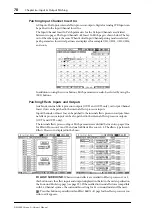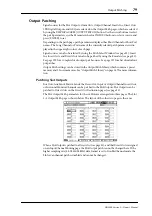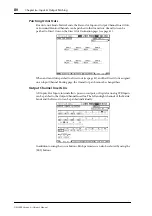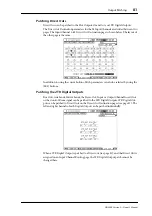
66
Chapter 5—Digital I/O & Cascading
DM2000 Version 2—Owner’s Manual
5 Digital I/O & Cascading
Wordclocks
Unlike analog audio equipment, digital audio equipment must be synchronized when dig-
ital audio signals are transferred from one device to another, otherwise, signals may not be
received correctly and audible noise, glitches, or clicks may occur. Synchronization is
achieved using what’s called a
wordclock
, which is a clock signal for synchronizing all the
digital audio signals in a system. Note that wordclocks are not the same as SMPTE/EBU or
MTC timecode, which is typically used to synchronize tape machines, MIDI sequencers,
and so on. Wordclock synchronization refers to the synchronization of the digital audio
processing circuits inside each digital audio device.
In a typical digital audio system, one device operates as the wordclock master, and the other
devices operate as wordclock slaves, synchronizing to the wordclock master. Wordclock sig-
nals can be distributed via dedicated cables, typically BNC cables, or derived from digital
audio connections, including AES/EBU, ADAT, and Tascam formats.
If you’re connecting to the DM2000 using only analog inputs and outputs, no special word-
clock settings are required, and the DM2000 can be set to use its own internally generated
wordclock. If you’re connecting other equipment digitally, however, you must decide which
device to use as the wordclock master and which devices to use as slaves.
The DM2000 can be used as the wordclock master running at either 44.1 kHz, 48 kHz,
88.2 kHz, or 96 kHz, or slaved to an external wordclock source. External wordclock signals
can be received via the Slot Inputs, 2TR Digital Inputs, the CASCADE IN port, or the ded-
icated BNC WORD CLOCK IN connector.
In a system where all devices share a common wordclock, it’s important that all devices be
turned on even if they’re not being used. Turn on the wordclock master first, and then the
slaves. When shutting down the system, turn off the slaves first, and then the master. Before
use, make sure that the wordclock slaves are correctly locked to the wordclock master. Most
devices have front panel indicators to indicate this. Refer to the relevant owner’s manuals
for more information.
Wordclock Connections
The DM2000 features one BNC wordclock input and two BNC
wordclock outputs. External wordclock signals can be connected
to the WORD CLOCK IN connector, and terminated by using the
75
Ω
ON/OFF switch (see page 68). WORD CLOCK OUT 1 out-
puts a wordclock signal at the same clock rate as the DM2000. WORD CLOCK OUT 2 out-
puts a wordclock signal at half the clock rate of the DM2000 when using 88.2 kHz or
96 kHz, so if the DM2000 is running at 96 kHz, a wordclock signal at 48 kHz is output here.

